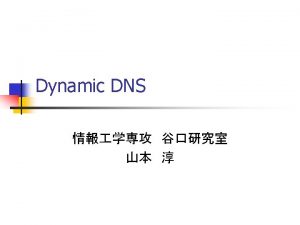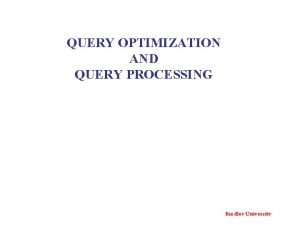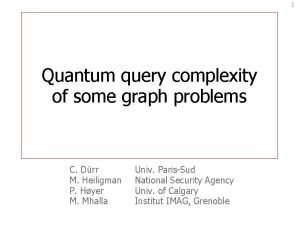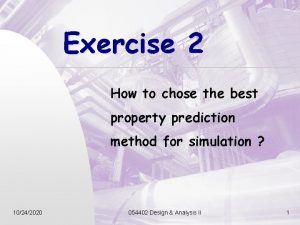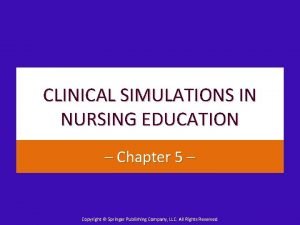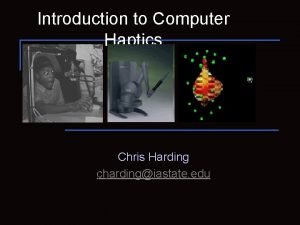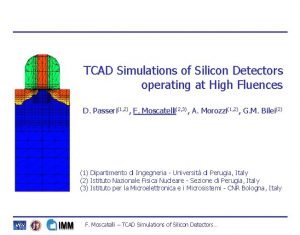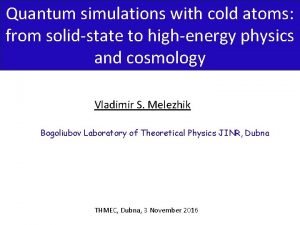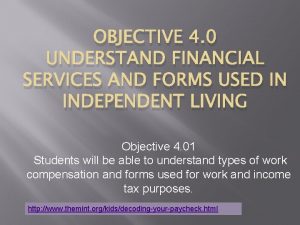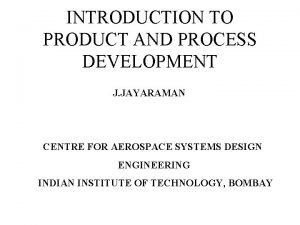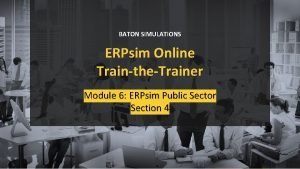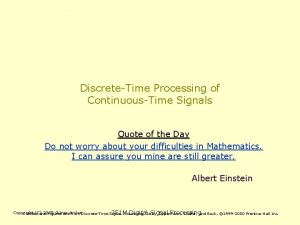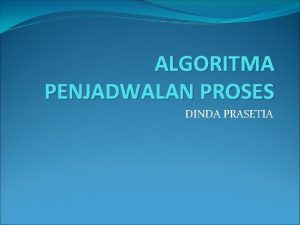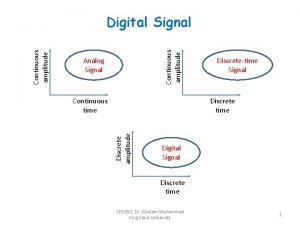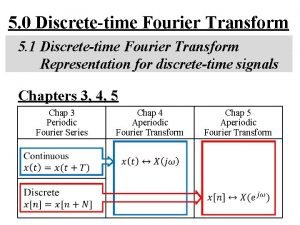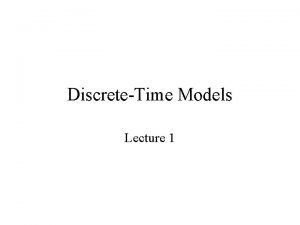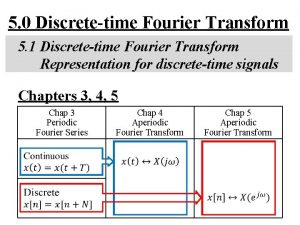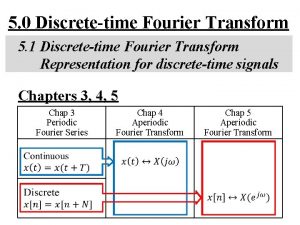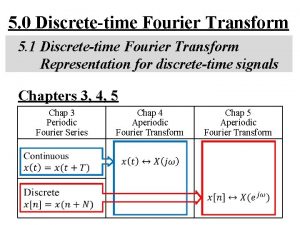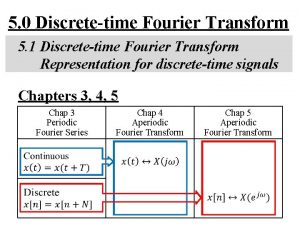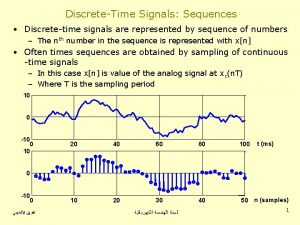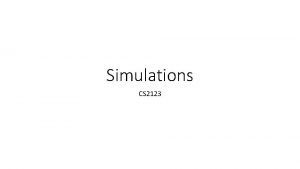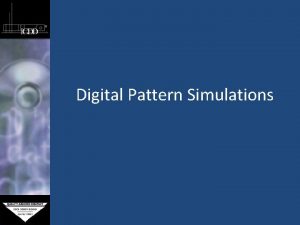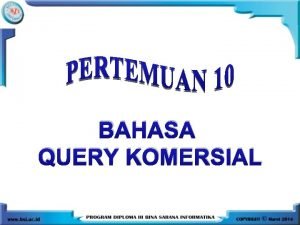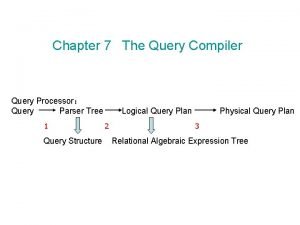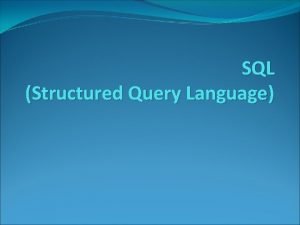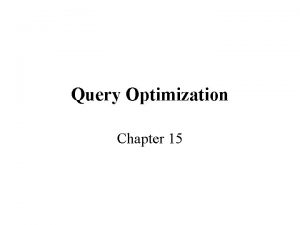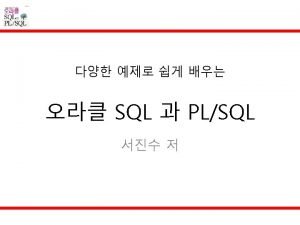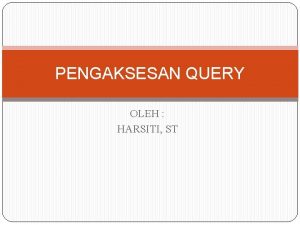Efficient DiscreteTime Simulations of Continuous Time Quantum Query

























- Slides: 25

Efficient Discrete-Time Simulations of Continuous. Time Quantum Query Algorithms Rolando D. Somma Joint work with R. Cleve, D. Gottesman, M. Mosca, D. Yonge-Mallo QIP 2009 January 14, 2009 Santa Fe, NM

Query or Oracle Model of Computation Given a black-box (BB) BB Want to learn a property of the N-tuple For quantum algorithms, we consider a reversible version of BB:

Query or Oracle Model of Computation Oracle models are useful to obtain bounds in complexity and to make a fair comparisson between quantum and classical complexities Quantum algorithms in the oracle model U 1 U 2 U 3 Known unitaries Examples * Shor’s factorization algorithm: Period-finding * Grover’s algorithm: find a marked element * Element Distinctness (Ambainis): finding two equal items … M M M Output gives some property of

Continuous-Time Quantum Query Model of Computation Query cost 1 - Query Hamiltonian fractional query 2 - Time-dependent Driving Hamiltonian (known) 3 - Evolution time (or total query cost) T>0 M M M * E. Farhi and S. Gutmann, Phys. Rev. A 57, 2043 (1998) Output gives some property of

Motivations: • Some quantum algorithms have been discovered in the continuous time query model “Exponential algorithmic speed up by quantum walk”, Childs et. al. [Proc. 35 th ACM Symp. On Th. Comp. (2003)] Given: an oracle for the graph, and the name of the Entrance. Find the name of the Exit.

Motivations: • Some quantum algorithms have been discovered in the continuous time query model “A Quantum Algorithm for Hamiltonian NAND tree”, Farhi, Goldstone, Gutmann quant-ph/0702144 N The query Hamiltonian is built from the adjacency matrix of a graph determined by the tree and the input state. It outputs the (binary) NAND in time

Motivations: Q(1): Is the CT query model more powerful than the conventional query model? The actual implementation of a quantum algorithm in the CT setting may require knowledge on the query Hamiltonian which my not be an available resource. Is it possible to convert a quantum algorithm in the CT setting to a quantum algorithm in the more conventional query model? Yes: It has been known(2) that this can be done with cost We present a method to do it at a cost (1) C. Mochon, Hamiltonian Oracles, quant-ph/0602032 (2) D. Berry, G Ahokas, R. Cleve, and B. C. Sanders, Commun. Math. Phys. 270, 359 (2007)

MAIN RESULTS: Theorem: Any continuous-time T-query algorithm can be simulated by a discrete-time O(T log T )-query algorithm Corollary: Any lower bounds on discrete query complexity carry over to continuous query complexity within a log factor

Quantum Algorithm: Overview The construction has many steps… • Step 1: Discretization using a (first order) Suzuki-Trotter approximation • Step 2: Probabilistic simulation of fractional queries using (low-amplitude) controlled discrete queries 1 and 2 yield simulations of cost O(T 2) • Step 3: Reduction on the amount of discrete queries by disregarding high. Hamming weight control-qubit states • Step 4: Correction of errors due to step 2

Step 1: Trotter-Suzuki Approximation Algorithm in the CT setting Output gives some property of M M M U 1 U 2 U 3 … M M M Step 1: Fidelity Still p>>T fractional queries

Step 1: Trotter-Suzuki Approximation U 1 U 2 U 3 … M M M Step 1: Fidelity Still p>>T fractional queries It doesn’t work in general…

Step 2: Probabilistic Simulation of Fractional Queries R 1 R 2 M Why do we want this conversion? The actual query cost is much lower than p. In step 3, we take advantage of this situation.

Step 2: Probabilistic Simulation of Fractional Queries U 1 U 2 U 3 … M M M Up R 1 R 2 M U 1 U 2 U 3 … M M M

Step 3: Reducing the amount of queries We break the circuit in segments of size m : R 1 … R 1 R 2 M U 1 U 2 U 3 … R 2 M M M M m queries For a segment of size m, it is likely to succeed There are 4 T segments of that size in the total circuit

Step 3: Reducing the amount of queries m R 1 R 2 M U 1 U 2 U 3 … Um m queries Density of states Hamming weight Poisson distribution: Exponential decay

Step 3: Reducing the amount of queries R 1 m R 1 U 1 U 2 U 3 … m queries Density of states Hamming weight cutoff At most k<<m full queries are needed ! Average: A<1/2

Step 3: Reducing the amount of queries R 1 m R 1 U 1 U 2 U 3 … m full queries R 1 m R 1 U 1 V 2 V 3 … Vk full queries

Step 3: Reducing the amount of queries Asks the value of the Hamming weight m Vj Implements the desired sequence of U’s Example: m … V 2 U 3 Um

Step 3: Reducing the amount of queries We build Step 4 to error correct and increase the probability of success towards 1

Step 4: Error correction m R 1 M U 1 U 2 U 3 m queries 1 - We undo the circuit: 2 - We redo it: … X

Step 4: Error correction 1 - We undo the circuit: 2 - We redo it: Both, the undoing and redoing parts require the simulation of fractional queries with phases ±. Therefore, to reduce the total amount of queries, each of these operations have to be simulated probabilistically as explained in step 2. This yields a branching process, in which we iterate the error correction procedure. In the worst case, the undoing and redoing parts succeed (each) with probability bounded below by 3/4.

Step 4: Error correction The probability of success increases towards 1 exponentially fast with k

Step 4: Error correction Because the size of the tree associated to the branching process is a O(1) constant, to succeed with probability (say) 1 - 3 , we need to simulate O(T/ 3) circuits ONLY. Each of the circuits in the branching process (of size m or smaller) is simulated using the “trick” of step 3 to reduce the amount of queries

Complexity of the simulation For fidelity 1 - , our simulation requires For classical input/output, the overall complexity is full queries

Step 5: Conclusions! Improvements?
 Productively efficient vs allocatively efficient
Productively efficient vs allocatively efficient Productively efficient vs allocatively efficient
Productively efficient vs allocatively efficient Productively efficient vs allocatively efficient
Productively efficient vs allocatively efficient Productively efficient vs allocatively efficient
Productively efficient vs allocatively efficient Allocative efficiency vs productive efficiency
Allocative efficiency vs productive efficiency Iterative query vs recursive query
Iterative query vs recursive query Query tree and query graph
Query tree and query graph Query tree and query graph
Query tree and query graph Quantum query complexity of some graph problems
Quantum query complexity of some graph problems Quantum physics vs quantum mechanics
Quantum physics vs quantum mechanics Quantum physics vs mechanics
Quantum physics vs mechanics Don't gamble with physical properties for simulations
Don't gamble with physical properties for simulations Clinical simulations in nursing education
Clinical simulations in nursing education Chris harding simulations
Chris harding simulations Tcad simulations
Tcad simulations World history simulations
World history simulations Simulations for solid state physics
Simulations for solid state physics Www.irs.gov/app/understanding taxes/student/simulations.jsp
Www.irs.gov/app/understanding taxes/student/simulations.jsp Pinpoint simulations 777
Pinpoint simulations 777 Baton simulations
Baton simulations Future past progressive
Future past progressive Present simple past simple future simple present continuous
Present simple past simple future simple present continuous Discrete time processing of continuous time signals
Discrete time processing of continuous time signals Elapsed time
Elapsed time Definisi penjadwalan
Definisi penjadwalan Fcfs nedir
Fcfs nedir





